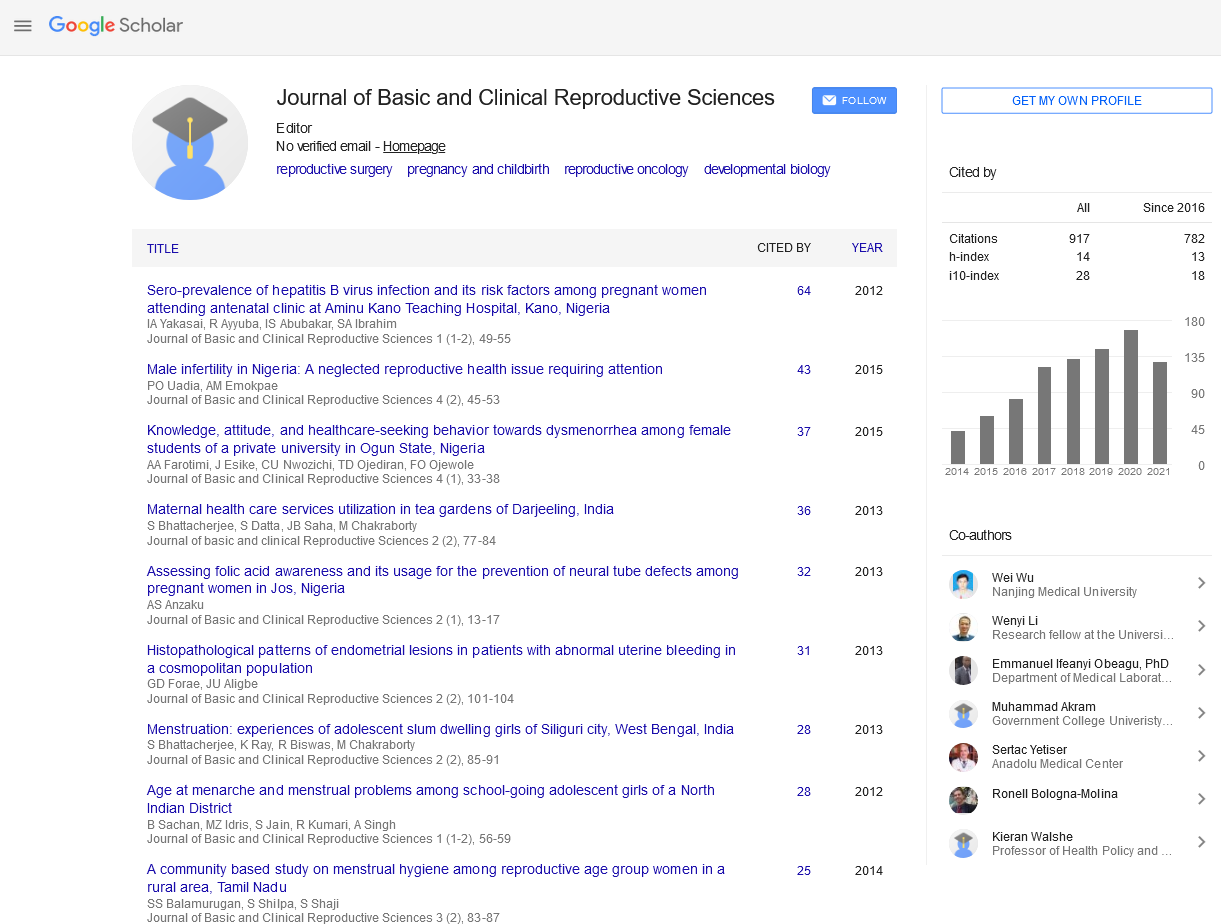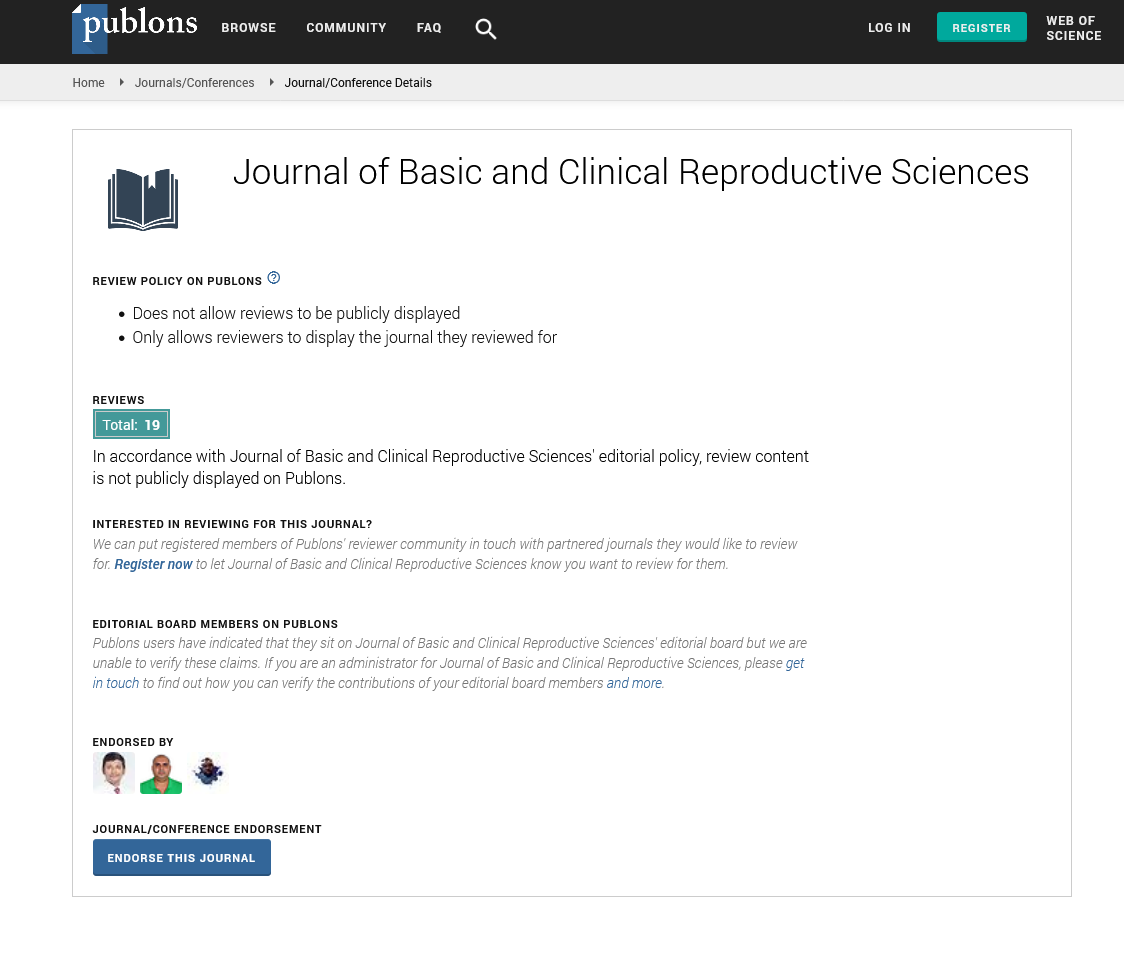Commentary - Journal of Basic and Clinical Reproductive Sciences (2023) Volume 12, Issue 3
Major Impact of Uterine Prolapse: Its Symptoms, Diagnosis and Treatment Options
Received: 24-May-2023, Manuscript No. JBCRS-23-102782; Editor assigned: 26-May-2023, Pre QC No. JBCRS-23-102782 (PQ); Reviewed: 09-Jun-2023 QC No. JBCRS-23-102782; Revised: 16-Jun-2023, Manuscript No. JBCRS-23-102782 (R); Published: 23-Jun-2023
This open-access article is distributed under the terms of the Creative Commons Attribution Non-Commercial License (CC BY-NC) (http://creativecommons.org/licenses/by-nc/4.0/), which permits reuse, distribution and reproduction of the article, provided that the original work is properly cited and the reuse is restricted to noncommercial purposes. For commercial reuse, contact reprints@pulsus.com
Description
Uterine prolapse is the protrusion of the uterus from its normal anatomical place into the vaginal canal, via the hymen. This is a result of the surrounding support structures becoming less strong. One of the many ailments grouped under the common term of pelvic organ prolapse is uterine prolapse. This activity describes the role of healthcare professionals in diagnosing and treating patients with uterine prolapse, as well as its genesis, examination, and treatment.
Uterine prolapse is a medical condition that affects a significant number of women worldwide. It occurs when the pelvic floor muscles and ligaments that support the uterus weaken, allowing the uterus to descend into or protrude from the vagina. Uterine prolapse can have a significant impact on a woman’s quality of life, causing discomfort, pain, and a variety of other symptoms.
Symptoms and diagnosis
The symptoms of uterine prolapse can vary depending on the severity of the condition. Mild cases may not present with any noticeable symptoms, while more advanced cases can cause significant discomfort. Common symptoms include a sensation of heaviness or pressure in the pelvic area, tissue protruding from the vagina, urinary incontinence, difficulty emptying the bladder completely, lower back pain. A healthcare provider can diagnose uterine prolapse through a pelvic examination, during which the degree of prolapse can be assessed.
Following delivery, mild uterine prolapse is typical. Symptoms are typically absent. There are several signs of mild to severe uterine prolapse
• Experiencing a pulling or weight in the pelvic
• Having the impression that bladder doesn’t completely empty when one uses the restroom
• Urinary leakage issues, commonly known as incontinence
• Pressure or discomfort in the low back or pelvic
Treatment options
The treatment of uterine prolapse depends on several factors, including the severity of the prolapse, the woman’s age, overall health, and desire for future pregnancies. In some cases, conservative management may be recommended, which includes lifestyle modifications and pelvic floor exercises to strengthen the muscles and ligaments. These exercises, known as Kegel exercises, can help improve muscle tone and provide support to the pelvic organs.
For more severe cases or when conservative measures are ineffective, other treatment options may be considered. A pessary, a removable device inserted into the vagina to provide support, can be used to alleviate symptoms and provide temporary relief. However, it requires regular cleaning and monitoring. Surgical intervention may be necessary for women who experience significant discomfort or desire a more permanent solution.
There are various surgical approaches available, including hysterectomy (removal of the uterus), uterosacral ligament suspension, and sacrocolpopexy. These procedures aim to restore the normal anatomical position of the uterus and provide support to the pelvic organs. The choice of surgery depends on factors such as the extent of prolapse, associated symptoms, and the woman’s desire for future fertility.
Conclusion
Uterine prolapse is a common condition that can significantly impact a woman’s well-being and quality of life. Understanding the causes, symptoms, and treatment options are necessary in managing this condition effectively. While conservative measures such as pelvic floor exercises and lifestyle modifications may be sufficient for some women, others may require pessaries or surgical intervention. It is important for women experiencing symptoms of uterine prolapse to seek medical advice to discuss their options and find the most suitable treatment plan. With the right approach, women can find relief from discomfort and regain control over their daily lives.


